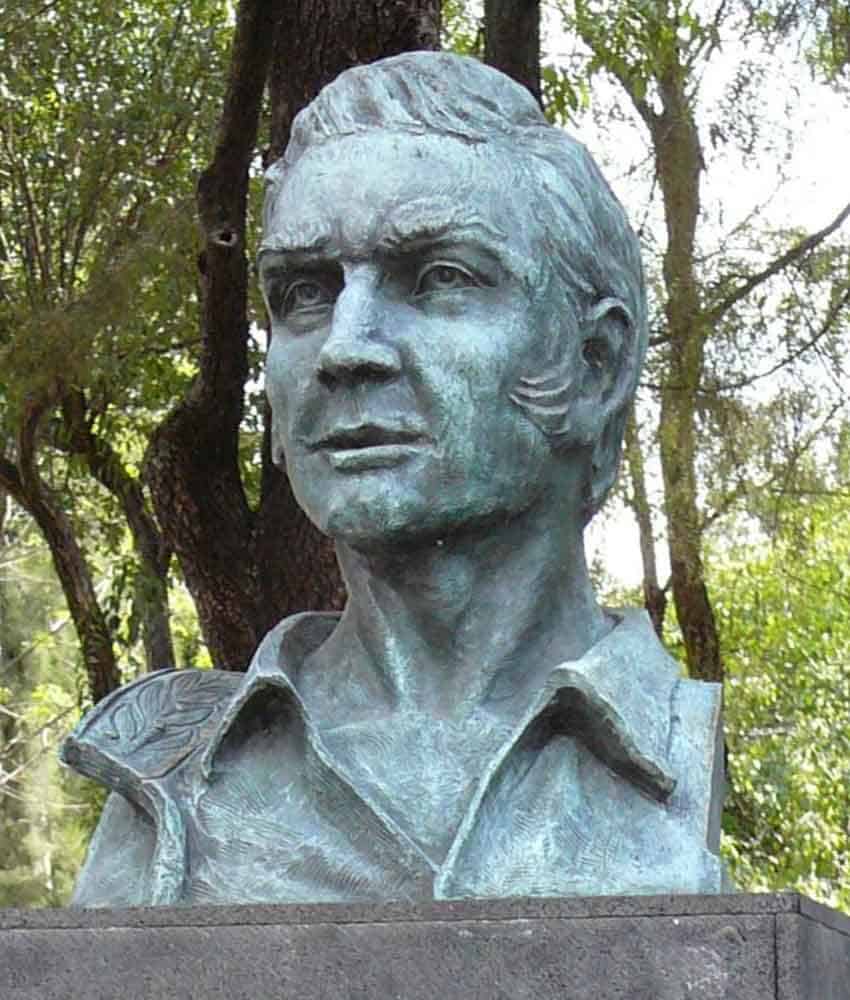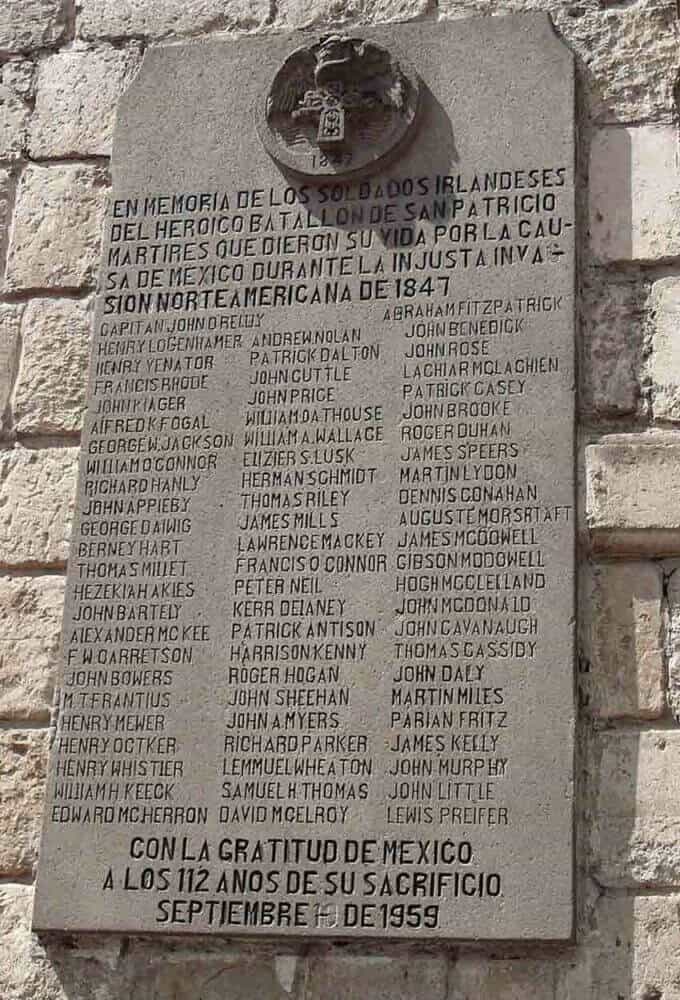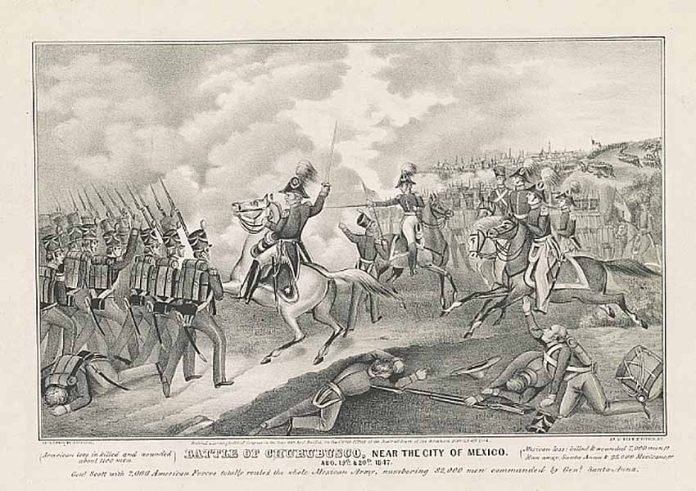As Mexican president and general Antonio López de Santa Anna’s army retreats from the Battle of Buena Vista during the Mexican-American War, an unlikely Mexican hero struggles to keep up the pace: Irish-American officer John Riley.
Riley, an immigrant to the United States who served in his adopted country’s army against Mexico on the Rio Grande, commanded the Batalión San Patricio, a Mexican battalion composed of European, mostly Irish, soldiers who had tired of the discrimination they experienced in the U.S. ranks and deserted to fight for Mexico.
Riley is a main character in a new historical novel by Reyna Grande, A Ballad of Love and Glory, which centers on the real-life character of Riley and his fictional partner, Ximena.
“I became really fascinated with John Riley,” Grande said. “I started to wonder, why did he do it? Who was he? What was driving him? Why did he want to help Mexico? So once I started asking all these questions, the wheels started turning for me.”

Grande has extensive experience chronicling life on both sides of the border: born in Iguala, Guerrero, she entered the United States as an undocumented immigrant at age nine. She went on to attend a university — the first in her family to do so — and to join the Macondo Writer’s Workshop, founded by prominent Latina author Sandra Cisneros.
In 2012, Grande wrote a bestselling, acclaimed memoir about her childhood experiences, The Distance Between Us. Since then, she has published a young readers’ version of the book, as well as a sequel, A Dream Called Home. She calls A Ballad of Love and Glory both “different and similar” to her previous books.
“The genre is different — it’s my first historical fiction,” she said. “I had never written about war, about battles.”
Yet, she noted, “I explored the immigrant experience again. This time, I was working with the Irish experience of the 19th century. There were so many similarities between the Irish experience and the Latino experience today. I drew a lot from my own immigrant experience to be able to write about John Riley.”
In the novel, John has left his wife and son back in Ireland to try to improve his life in the U.S. and eventually bring his family over. Yet, the American army treats Irish immigrant soldiers harshly, while the Mexican army covertly sends them offers of better treatment and reminders of their shared Catholic faith. Riley ends up joining those who swim across the Rio Grande to switch sides.
The inspiration for Ximena’s character, meanwhile, came from an 1847 poem by John Greenleaf Whittier, “The Angels of Buena Vista.” The poem features a soldadera named Ximena as its protagonist, and it opens Grande’s book.
“When I found his poem, I decided to make Ximena my female lead in the book,” Grande said. “I did not really know anything about Ximena except the poem — she was on the battlefield, tending to the wounded. I had to create her from scratch.”
On the arduous retreat to San Luis Potosí, for example, the Mexican army faces both hunger and thirst. Ximena Salome, a Mexican widow and army nurse, uses her invaluable skills as a curandera to help Riley: she chops up a nopal to purify water and feeds him cactus pulp, chia seeds and yucca petals.

Grande gave Ximena a backstory with roots in San Antonio de Bexar, back when Texas was part of Mexico. Ximena’s family sided with the Anglos against the Mexicans during the Texas Revolution, yet nevertheless, when the narrative begins, Ximena has lost her home in Texas and has had to relocate south of the Rio Grande. There, she rides horses with her husband and learns about healing from her grandmother, a curandera.
These details are a poignant tribute to the author’s late grandmother, who was also a curandera.
“When I was a little girl, I often watched her doing limpias [cleansing rituals], stuff like that,” Grande said. “I have memories of my grandmother practicing curanderismo.” She added that the scenes between Ximena and her abuela (grandmother) are an imaginary “relationship I might have had with my grandmother.”
After the outbreak of the Mexican-American War, Ximena’s hacienda becomes a target of the Texas Rangers, and her husband dies in the attack. Seeking revenge, she becomes a nurse in the Mexican army, where she meets Riley.
A memorable, passionate love story develops between them, reflected in conversations punctuated with John’s Irish brogue and Ximena’s Mexican accent. One such exchange takes place when John fears that all is lost on the retreat from Buena Vista. “Don’t give up on me, you hear?’ he pleads. “Don’t leave me to the buzzards.”
She replies, “¡Nunca [never]! I will not leave you behind, soldier.”
Ximena’s Texas background also means that she is familiar with Santa Anna. Although the novel presents him as able to inspire the army to go into battle, it also shows an unsavory side.
“Based on everything I read about him, reading his proclamations, I felt he was a very complex and complicated man,” Grande said. “He was charismatic but also a womanizer, a flirt.”

The book even depicts Santa Anna’s love of cockfighting, which he expresses to both Ximena and John at various points.
“To me, the cockfighting also turns into a metaphor in the book,” Grande said, citing an exchange in the book between John and a fellow San Patricio soldier. “John Riley turns to Patrick Dalton and says there’s a fine line between bravery and foolishness, talking about the cocks and why they fight to the death.”
“I think it’s mostly male readers who are liking the book,” Grande reflected. “They like the battles, they like the politics. They like that the book is a war story with a love story, that the love story doesn’t dominate the narrative, whereas female readers, I think, they wanted more love, less war.”
The war narrative contains a grim chapter. Although the San Patricios performed valiantly, many were captured by the U.S. military after the Battle of Churubusco, a battle which the U.S. general Ulysses S. Grant once said was one of the hardest of the war to win.
In real life, the captured San Patricio soldiers were court-martialed by the U.S. for treason. Fifty were executed. While Riley’s life was spared, he was whipped and branded.
His life after the war is unknown to history, according to the author. “Nobody knows what happened to him,” she said. “Once he was discharged from the Mexican army, he disappeared from the military records. People don’t really know what happened.”
So the author came up with her own ending to the story of John and Ximena. “It was up to me to give him an ending,” she said.
But what of Riley’s unit?

“For a long time, the U.S. government denied the existence of the St. Patrick’s Battalion. It was not until recent decades when they finally released the records, the official military records, especially of the courts-martial.”
“In Mexico, it’s different. In Mexico, they’re still considered as the Irish heroes.”
Rich Tenorio is a frequent contributor to Mexico News Daily.
